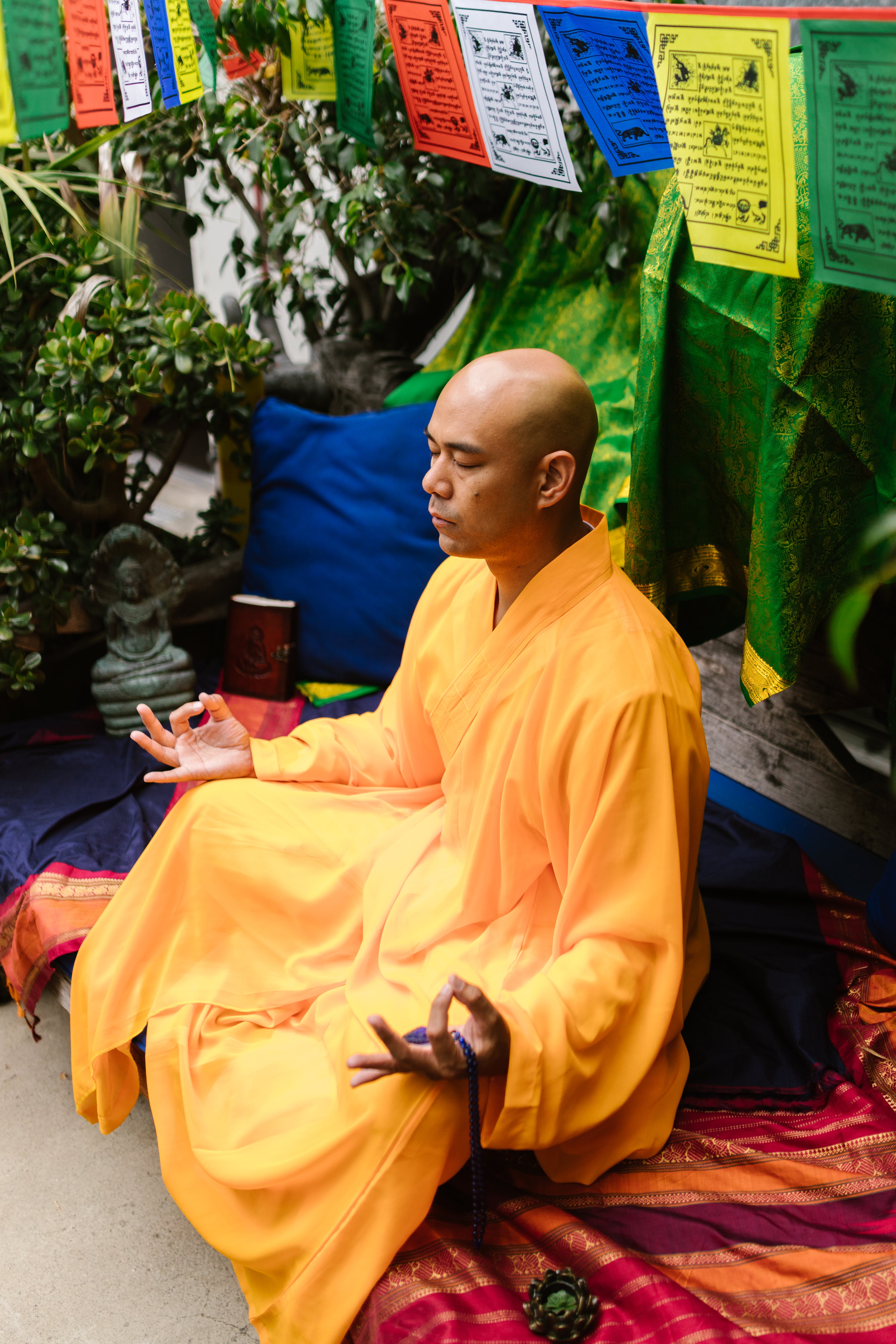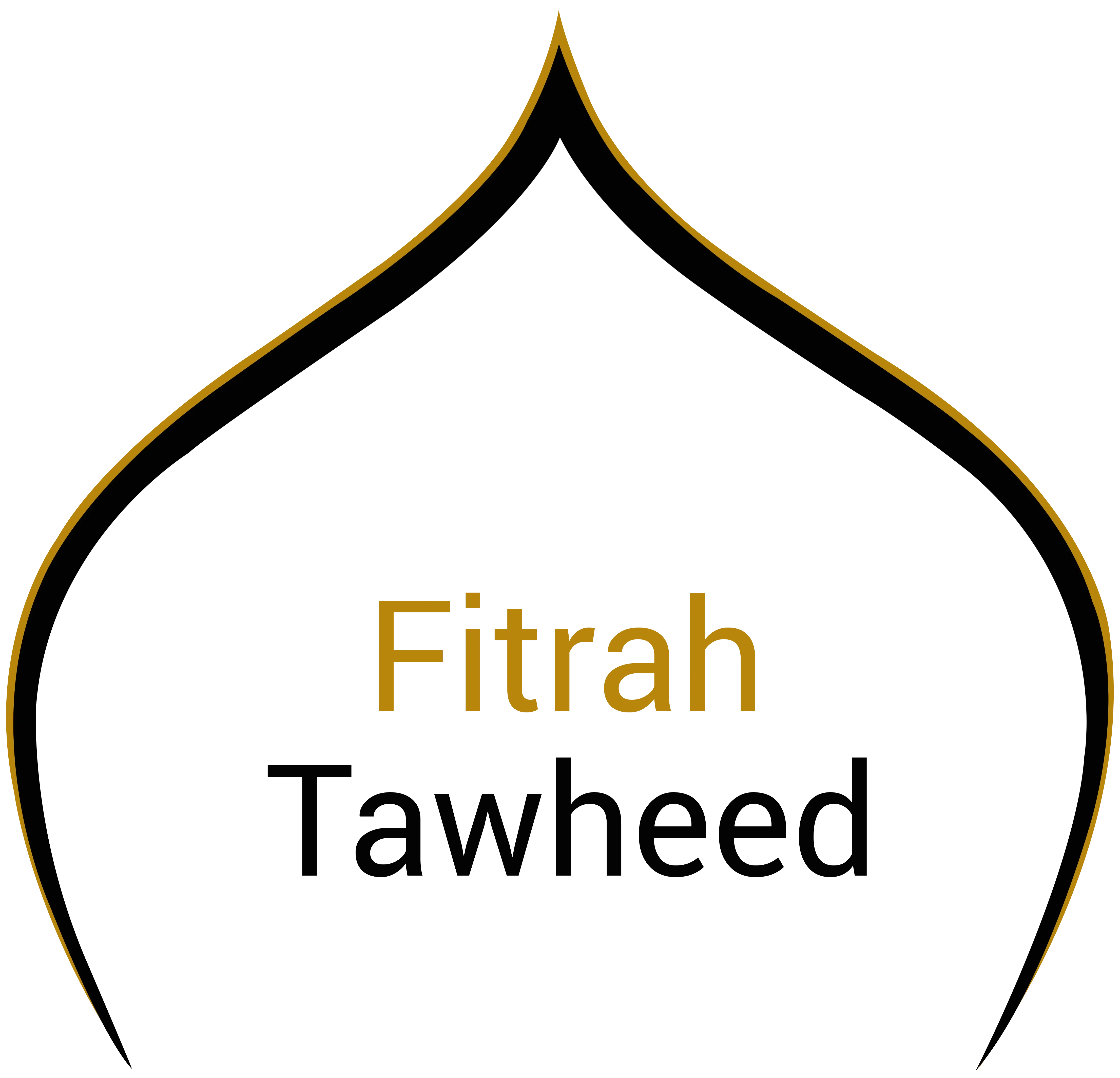
Is wearing red allowed?
Red comes in different shades, which all can be quite a good looking color to wear. It ranges through shades of burundy, blood red, vibrant red, red orange etc.
The color red is worn by both men and women. In this article, you will come to know whether men are allowed to wear red.
- It is allowed to wear red
- It is not allowed to wear plain red
- It is disliked to wear plain red
As for the correct opinion to us, it is that wearing red is allowed for men, whether it is plain red or not. This is based on the fact that there are no authentic narrations forbidding the wearing of red. And as for the shades of red that leans towards the orange color, then this is haram to wear when it is vibrant.
The word orange is quite a new English word, just like the word 'البرتقالي' in Arabic describing the orange color. Orange was described to be red with a different shade, but only recently this has changed, and now red and orange are two distinct colors.
In some instances however, we do find our choice of words still being accustomed to the past. For example describing the color of hair. We say red hair when we describe hair in orange color.
The ruling on the color red is explained with evidences below. These narrations actually talk about reddish orange.

The Prophet (ﷺ) wore red
 حَدَّثَنَا أَبُو الْوَلِيدِ، حَدَّثَنَا شُعْبَةُ، عَنْ أَبِي إِسْحَاقَ، سَمِعَ الْبَرَاءَ ـ رضى الله عنه ـ يَقُولُ كَانَ النَّبِيُّ صلى الله عليه وسلم مَرْبُوعًا، وَقَدْ رَأَيْتُهُ فِي حُلَّةٍ حَمْرَاءَ مَا رَأَيْتُ شَيْئًا أَحْسَنَ مِنْهُ.
حَدَّثَنَا أَبُو الْوَلِيدِ، حَدَّثَنَا شُعْبَةُ، عَنْ أَبِي إِسْحَاقَ، سَمِعَ الْبَرَاءَ ـ رضى الله عنه ـ يَقُولُ كَانَ النَّبِيُّ صلى الله عليه وسلم مَرْبُوعًا، وَقَدْ رَأَيْتُهُ فِي حُلَّةٍ حَمْرَاءَ مَا رَأَيْتُ شَيْئًا أَحْسَنَ مِنْهُ.
Narrated Al-Bara:
The Prophet (ﷺ) was of a modest height. I saw him wearing a red Hullah, and I did not see anything better than him.
[Sahih al-Bukhari 5848]
 حَدَّثَنَا مُحَمَّدُ بْنُ عَرْعَرَةَ، قَالَ حَدَّثَنِي عُمَرُ بْنُ أَبِي زَائِدَةَ، عَنْ عَوْنِ بْنِ أَبِي جُحَيْفَةَ، عَنْ أَبِيهِ، قَالَ رَأَيْتُ رَسُولَ اللَّهِ صلى الله عليه وسلم فِي قُبَّةٍ حَمْرَاءَ مِنْ أَدَمٍ، وَرَأَيْتُ بِلاَلاً أَخَذَ وَضُوءَ رَسُولِ اللَّهِ صلى الله عليه وسلم وَرَأَيْتُ النَّاسَ يَبْتَدِرُونَ ذَاكَ الْوَضُوءَ، فَمَنْ أَصَابَ مِنْهُ شَيْئًا تَمَسَّحَ بِهِ، وَمَنْ لَمْ يُصِبْ مِنْهُ شَيْئًا أَخَذَ مِنْ بَلَلِ يَدِ صَاحِبِهِ، ثُمَّ رَأَيْتُ بِلاَلاً أَخَذَ عَنَزَةً فَرَكَزَهَا، وَخَرَجَ النَّبِيُّ صلى الله عليه وسلم فِي حُلَّةٍ حَمْرَاءَ مُشَمِّرًا، صَلَّى إِلَى الْعَنَزَةِ بِالنَّاسِ رَكْعَتَيْنِ، وَرَأَيْتُ النَّاسَ وَالدَّوَابَّ يَمُرُّونَ مِنْ بَيْنِ يَدَىِ الْعَنَزَةِ.
حَدَّثَنَا مُحَمَّدُ بْنُ عَرْعَرَةَ، قَالَ حَدَّثَنِي عُمَرُ بْنُ أَبِي زَائِدَةَ، عَنْ عَوْنِ بْنِ أَبِي جُحَيْفَةَ، عَنْ أَبِيهِ، قَالَ رَأَيْتُ رَسُولَ اللَّهِ صلى الله عليه وسلم فِي قُبَّةٍ حَمْرَاءَ مِنْ أَدَمٍ، وَرَأَيْتُ بِلاَلاً أَخَذَ وَضُوءَ رَسُولِ اللَّهِ صلى الله عليه وسلم وَرَأَيْتُ النَّاسَ يَبْتَدِرُونَ ذَاكَ الْوَضُوءَ، فَمَنْ أَصَابَ مِنْهُ شَيْئًا تَمَسَّحَ بِهِ، وَمَنْ لَمْ يُصِبْ مِنْهُ شَيْئًا أَخَذَ مِنْ بَلَلِ يَدِ صَاحِبِهِ، ثُمَّ رَأَيْتُ بِلاَلاً أَخَذَ عَنَزَةً فَرَكَزَهَا، وَخَرَجَ النَّبِيُّ صلى الله عليه وسلم فِي حُلَّةٍ حَمْرَاءَ مُشَمِّرًا، صَلَّى إِلَى الْعَنَزَةِ بِالنَّاسِ رَكْعَتَيْنِ، وَرَأَيْتُ النَّاسَ وَالدَّوَابَّ يَمُرُّونَ مِنْ بَيْنِ يَدَىِ الْعَنَزَةِ.
Narrated Abu Juhaifa:
I saw Bilal carrying a short spear (or stick) which he planted in the ground. The Prophet came out tucking up his red Hullah, and led the people in prayer and offered two rak`at (facing the Ka`ba) taking a short spear (or stick) as a Sutra for his prayer. I saw the people and animals passing in front of him beyond the stick.
Sufyan said in the narration of Tirmidhi: "We think that it was a Hibrah (striped Yemeni clothing)."
[Sahih al-Bukhari 376, Jami` at-Tirmidhi 197]
 حَدَّثَنَا مُسَدَّدٌ، حَدَّثَنَا أَبُو مُعَاوِيَةَ، عَنْ هِلاَلِ بْنِ عَامِرٍ، عَنْ أَبِيهِ، قَالَ رَأَيْتُ رَسُولَ اللَّهِ صلى الله عليه وسلم بِمِنًى يَخْطُبُ عَلَى بَغْلَةٍ وَعَلَيْهِ بُرْدٌ أَحْمَرُ وَعَلِيٌّ - رضى الله عنه - أَمَامَهُ يُعَبِّرُ عَنْهُ .
حَدَّثَنَا مُسَدَّدٌ، حَدَّثَنَا أَبُو مُعَاوِيَةَ، عَنْ هِلاَلِ بْنِ عَامِرٍ، عَنْ أَبِيهِ، قَالَ رَأَيْتُ رَسُولَ اللَّهِ صلى الله عليه وسلم بِمِنًى يَخْطُبُ عَلَى بَغْلَةٍ وَعَلَيْهِ بُرْدٌ أَحْمَرُ وَعَلِيٌّ - رضى الله عنه - أَمَامَهُ يُعَبِّرُ عَنْهُ .
Narrated Amir:
I saw the Messenger of Allah (ﷺ) at Mina giving sermon on a mule and wearing a red Hullah, while Ali was announcing.
[Sunan Abi Dawud 4073]
 حَدَّثَنَا مُحَمَّدُ بْنُ الْمُثَنَّى، حَدَّثَنَا مُعَاذُ بْنُ هِشَامٍ، حَدَّثَنِي أَبِي، عَنْ قَتَادَةَ، عَنْ أَنَسٍ، قَالَ كَانَ أَحَبَّ الثِّيَابِ إِلَى رَسُولِ اللَّهِ صلى الله عليه وسلم الْحِبَرَةُ .
حَدَّثَنَا مُحَمَّدُ بْنُ الْمُثَنَّى، حَدَّثَنَا مُعَاذُ بْنُ هِشَامٍ، حَدَّثَنِي أَبِي، عَنْ قَتَادَةَ، عَنْ أَنَسٍ، قَالَ كَانَ أَحَبَّ الثِّيَابِ إِلَى رَسُولِ اللَّهِ صلى الله عليه وسلم الْحِبَرَةُ .
Anas reported that the garment most liked by the Prophet (ﷺ) was the Hibrah (Yemeni mantle).
[Sahih Muslim 2079b]
Salaf Saliheen who wore red:
 حَدَّثَنَا مُحَمَّدُ بْنُ الْعَلاَءِ، أَنَّ زَيْدَ بْنَ حُبَابٍ، حَدَّثَهُمْ حَدَّثَنَا حُسَيْنُ بْنُ وَاقِدٍ، حَدَّثَنِي عَبْدُ اللَّهِ بْنُ بُرَيْدَةَ، عَنْ أَبِيهِ، قَالَ خَطَبَنَا رَسُولُ اللَّهِ صلى الله عليه وسلم فَأَقْبَلَ الْحَسَنُ وَالْحُسَيْنُ - رضى الله عنهما - عَلَيْهِمَا قَمِيصَانِ أَحْمَرَانِ يَعْثُرَانِ وَيَقُومَانِ فَنَزَلَ فَأَخَذَهُمَا فَصَعِدَ بِهِمَا الْمِنْبَرَ ثُمَّ قَالَ " صَدَقَ اللَّهُ { إِنَّمَا أَمْوَالُكُمْ وَأَوْلاَدُكُمْ فِتْنَةٌ } رَأَيْتُ هَذَيْنِ فَلَمْ أَصْبِرْ " . ثُمَّ أَخَذَ فِي الْخُطْبَةِ .
حَدَّثَنَا مُحَمَّدُ بْنُ الْعَلاَءِ، أَنَّ زَيْدَ بْنَ حُبَابٍ، حَدَّثَهُمْ حَدَّثَنَا حُسَيْنُ بْنُ وَاقِدٍ، حَدَّثَنِي عَبْدُ اللَّهِ بْنُ بُرَيْدَةَ، عَنْ أَبِيهِ، قَالَ خَطَبَنَا رَسُولُ اللَّهِ صلى الله عليه وسلم فَأَقْبَلَ الْحَسَنُ وَالْحُسَيْنُ - رضى الله عنهما - عَلَيْهِمَا قَمِيصَانِ أَحْمَرَانِ يَعْثُرَانِ وَيَقُومَانِ فَنَزَلَ فَأَخَذَهُمَا فَصَعِدَ بِهِمَا الْمِنْبَرَ ثُمَّ قَالَ " صَدَقَ اللَّهُ { إِنَّمَا أَمْوَالُكُمْ وَأَوْلاَدُكُمْ فِتْنَةٌ } رَأَيْتُ هَذَيْنِ فَلَمْ أَصْبِرْ " . ثُمَّ أَخَذَ فِي الْخُطْبَةِ .
Narrated Buraydah ibn al-Hasib:
The Messenger of Allah (ﷺ) delivered a speech to us; meanwhile al-Hasan and al-Husayn came upon there stumbling, wearing red shirts. He came down from the pulpit, took them and ascended it with them. He then recited the verse: 'Your property and your children are only trial'. I saw both of them, and I could not wait. Afterwards he resumed the speech.
[Sunan Abi Dawud 1109]
 وحدثني عن مالك، عن نافع، أن عبد الله بن عمر كان يلبس الثوب المصبوغ بالمشق. والمصبوغ بالزعفران.
وحدثني عن مالك، عن نافع، أن عبد الله بن عمر كان يلبس الثوب المصبوغ بالمشق. والمصبوغ بالزعفران.
[كتاب الموطأ - الإمام مالك - ج ٢ - الصفحة ٩١١]
Nafi' narrated: Ibn 'Umar used to wear a thobe dyed with red ochre and a thobe dyed with saffron (yellow).
[Al-Muwatta 2/911]
 حَدَّثَنَا سُلَيْمَانُ بْنُ حَرْبٍ، حَدَّثَنَا حَمَّادٌ، عَنْ أَيُّوبَ، عَنْ مُحَمَّدٍ، قَالَ كُنَّا عِنْدَ أَبِي هُرَيْرَةَ وَعَلَيْهِ ثَوْبَانِ مُمَشَّقَانِ مِنْ كَتَّانٍ فَتَمَخَّطَ فَقَالَ بَخْ بَخْ أَبُو هُرَيْرَةَ يَتَمَخَّطُ فِي الْكَتَّانِ، لَقَدْ رَأَيْتُنِي وَإِنِّي لأَخِرُّ فِيمَا بَيْنَ مِنْبَرِ رَسُولِ اللَّهِ صلى الله عليه وسلم إِلَى حُجْرَةِ عَائِشَةَ مَغْشِيًّا عَلَىَّ، فَيَجِيءُ الْجَائِي فَيَضَعُ رِجْلَهُ عَلَى عُنُقِي، وَيُرَى أَنِّي مَجْنُونٌ، وَمَا بِي مِنْ جُنُونٍ، مَا بِي إِلاَّ الْجُوعُ.
حَدَّثَنَا سُلَيْمَانُ بْنُ حَرْبٍ، حَدَّثَنَا حَمَّادٌ، عَنْ أَيُّوبَ، عَنْ مُحَمَّدٍ، قَالَ كُنَّا عِنْدَ أَبِي هُرَيْرَةَ وَعَلَيْهِ ثَوْبَانِ مُمَشَّقَانِ مِنْ كَتَّانٍ فَتَمَخَّطَ فَقَالَ بَخْ بَخْ أَبُو هُرَيْرَةَ يَتَمَخَّطُ فِي الْكَتَّانِ، لَقَدْ رَأَيْتُنِي وَإِنِّي لأَخِرُّ فِيمَا بَيْنَ مِنْبَرِ رَسُولِ اللَّهِ صلى الله عليه وسلم إِلَى حُجْرَةِ عَائِشَةَ مَغْشِيًّا عَلَىَّ، فَيَجِيءُ الْجَائِي فَيَضَعُ رِجْلَهُ عَلَى عُنُقِي، وَيُرَى أَنِّي مَجْنُونٌ، وَمَا بِي مِنْ جُنُونٍ، مَا بِي إِلاَّ الْجُوعُ.
Narrated Muhammad ibn Sireen:
We were with Abu Huraira while he was wearing two linen garments dyed with red ochre. He wiped his nose with his garment, saying (to himself), "Fantastic! Fantastic! Abu Huraira is cleaning his nose with linen! There came a time when I would fall senseless between the pulpit of Allah's Messenger (ﷺ) and `Aisha's dwelling whereupon a passerby would come and put his foot on my neck, considering me a mad man, but in fact, I had no madness, I suffered nothing but hunger."
[Sahih al-Bukhari 7324]
 حدثنا أبو بكر قال ثنا يحيى بن عبيد قال: رأيت على طاوس ثوبين ممشقين [بطين] وهو محرم.
حدثنا أبو بكر قال ثنا يحيى بن عبيد قال: رأيت على طاوس ثوبين ممشقين [بطين] وهو محرم.
[المصنف - ابن أبي شيبة الكوفي - ج ٤ - الصفحة ٢١٧]
Yahya ibn 'Ubayd narrated: I saw Tawus wearing clothes dyed with red ochre while he was Muhrim.
[Musannaf Ibn Abi Shaybah 4/217]
 حدثنا أبو بكر قال ثنا وكيع عن حزام بن هشام قال: رأيت على عمر بن عبد العزيز ثوبين ممشقين وهو محرم.
حدثنا أبو بكر قال ثنا وكيع عن حزام بن هشام قال: رأيت على عمر بن عبد العزيز ثوبين ممشقين وهو محرم.
[المصنف - ابن أبي شيبة الكوفي - ج ٤ - الصفحة ٢١٨]
Hazim ibn Hisham narrated: I saw Umar Ibn Abdul-'Aziz wearing clothes dyed with red ochre while he was Muhrim.
[Musannaf Ibn Abi Shaybah 4/218]
 عِنْدَ أَهْلِ الْعِلْمِ أَنَّهُمْ كَرِهُوا لُبْسَ الْمُعَصْفَرِ وَرَأَوْا أَنَّ مَا صُبِغَ بِالْحُمْرَةِ بِالْمَدَرِ أَوْ غَيْرِ ذَلِكَ فَلاَ بَأْسَ بِهِ إِذَا لَمْ يَكُنْ مُعَصْفَرًا
عِنْدَ أَهْلِ الْعِلْمِ أَنَّهُمْ كَرِهُوا لُبْسَ الْمُعَصْفَرِ وَرَأَوْا أَنَّ مَا صُبِغَ بِالْحُمْرَةِ بِالْمَدَرِ أَوْ غَيْرِ ذَلِكَ فَلاَ بَأْسَ بِهِ إِذَا لَمْ يَكُنْ مُعَصْفَرًا
[سنن الترمذي ٢٨٠٧]
Imam Tirmidhi said:
"According to the people of knowledge is that they hate wearing clothes dyed with safflower. And their opinion is that there is nothing wrong with what is dyed red with ochre or anything else as long as it is not safflower."
[Sunan Tirmidhi 2807]
 Safflower
Produces vibrant orange shades
Safflower
Produces vibrant orange shades
 Red ochre
Produces shades of orange resembling pottery
Red ochre
Produces shades of orange resembling pottery
Prohibition of wearing clothes dyed with safflower
Those who believe red to be haram use narrations about the prohibition on safflower dye for men. This dye creates a vibrant orange color. So these narrations do not talk about the real red color, but rather about the color orange in its vibrant shade.
Safflower is called 'usfur (عصفر)' in Arabic. The narrations talk about clothes dyed with this, which word 'الْمُعَصْفَرَ' is used: that which is dyed with safflower.
 حَدَّثَنَا مُحَمَّدُ بْنُ الْمُثَنَّى، حَدَّثَنَا مُعَاذُ بْنُ هِشَامٍ، حَدَّثَنِي أَبِي، عَنْ يَحْيَى، حَدَّثَنِي مُحَمَّدُ بْنُ إِبْرَاهِيمَ بْنِ الْحَارِثِ، أَنَّ ابْنَ مَعْدَانَ، أَخْبَرَهُ أَنَّ جُبَيْرَ بْنَ نُفَيْرٍ أَخْبَرَهُ أَنَّ عَبْدَ اللَّهِ بْنَ عَمْرِو بْنِ الْعَاصِ أَخْبَرَهُ قَالَ رَأَى رَسُولُ اللَّهِ صلى الله عليه وسلم عَلَىَّ ثَوْبَيْنِ مُعَصْفَرَيْنِ فَقَالَ " إِنَّ هَذِهِ مِنْ ثِيَابِ الْكُفَّارِ فَلاَ تَلْبَسْهَا " .
حَدَّثَنَا مُحَمَّدُ بْنُ الْمُثَنَّى، حَدَّثَنَا مُعَاذُ بْنُ هِشَامٍ، حَدَّثَنِي أَبِي، عَنْ يَحْيَى، حَدَّثَنِي مُحَمَّدُ بْنُ إِبْرَاهِيمَ بْنِ الْحَارِثِ، أَنَّ ابْنَ مَعْدَانَ، أَخْبَرَهُ أَنَّ جُبَيْرَ بْنَ نُفَيْرٍ أَخْبَرَهُ أَنَّ عَبْدَ اللَّهِ بْنَ عَمْرِو بْنِ الْعَاصِ أَخْبَرَهُ قَالَ رَأَى رَسُولُ اللَّهِ صلى الله عليه وسلم عَلَىَّ ثَوْبَيْنِ مُعَصْفَرَيْنِ فَقَالَ " إِنَّ هَذِهِ مِنْ ثِيَابِ الْكُفَّارِ فَلاَ تَلْبَسْهَا " .
'Abdullah b. 'Amr b. al-As reported:
Allah's Messenger (ﷺ) saw me wearing two clothes dyed in safflower. whereupon he said: These are the clothes (usually worn by) the non-believers, so do not wear them.
[Sahih Muslim 2077a]
 حَدَّثَنَا دَاوُدُ بْنُ رُشَيْدٍ، حَدَّثَنَا عُمَرُ بْنُ أَيُّوبَ الْمَوْصِلِيُّ، حَدَّثَنَا إِبْرَاهِيمُ بْنُ نَافِعٍ، عَنْ سُلَيْمَانَ الأَحْوَلِ، عَنْ طَاوُسٍ، عَنْ عَبْدِ اللَّهِ بْنِ عَمْرٍو، قَالَ رَأَى النَّبِيُّ صلى الله عليه وسلم عَلَىَّ ثَوْبَيْنِ مُعَصْفَرَيْنِ فَقَالَ " أَأُمُّكَ أَمَرَتْكَ بِهَذَا " . قُلْتُ أَغْسِلُهُمَا . قَالَ " بَلْ أَحْرِقْهُمَا " .
حَدَّثَنَا دَاوُدُ بْنُ رُشَيْدٍ، حَدَّثَنَا عُمَرُ بْنُ أَيُّوبَ الْمَوْصِلِيُّ، حَدَّثَنَا إِبْرَاهِيمُ بْنُ نَافِعٍ، عَنْ سُلَيْمَانَ الأَحْوَلِ، عَنْ طَاوُسٍ، عَنْ عَبْدِ اللَّهِ بْنِ عَمْرٍو، قَالَ رَأَى النَّبِيُّ صلى الله عليه وسلم عَلَىَّ ثَوْبَيْنِ مُعَصْفَرَيْنِ فَقَالَ " أَأُمُّكَ أَمَرَتْكَ بِهَذَا " . قُلْتُ أَغْسِلُهُمَا . قَالَ " بَلْ أَحْرِقْهُمَا " .
'Abdullah b. 'Amr b. al-As reported:
Allah's Apostle (ﷺ) saw me in two clothes dyed in safflower, whereupon he said: Has your mother ordered you to do so (as this color is for women)? And I said: I will wash them (remove its color). He said: Burn them.
[Sahih Muslim 2077c]
 حَدَّثَنَا يَحْيَى بْنُ يَحْيَى، قَالَ قَرَأْتُ عَلَى مَالِكٍ عَنْ نَافِعٍ، عَنْ إِبْرَاهِيمَ بْنِ عَبْدِ، اللَّهِ بْنِ حُنَيْنٍ عَنْ أَبِيهِ، عَنْ عَلِيِّ بْنِ أَبِي طَالِبٍ، أَنَّ رَسُولَ اللَّهِ صلى الله عليه وسلم نَهَى عَنْ لُبْسِ الْقَسِّيِّ وَالْمُعَصْفَرِ وَعَنْ تَخَتُّمِ الذَّهَبِ وَعَنْ قِرَاءَةِ الْقُرْآنِ فِي الرُّكُوعِ .
حَدَّثَنَا يَحْيَى بْنُ يَحْيَى، قَالَ قَرَأْتُ عَلَى مَالِكٍ عَنْ نَافِعٍ، عَنْ إِبْرَاهِيمَ بْنِ عَبْدِ، اللَّهِ بْنِ حُنَيْنٍ عَنْ أَبِيهِ، عَنْ عَلِيِّ بْنِ أَبِي طَالِبٍ، أَنَّ رَسُولَ اللَّهِ صلى الله عليه وسلم نَهَى عَنْ لُبْسِ الْقَسِّيِّ وَالْمُعَصْفَرِ وَعَنْ تَخَتُّمِ الذَّهَبِ وَعَنْ قِرَاءَةِ الْقُرْآنِ فِي الرُّكُوعِ .
'Ali b. Abu Talib reported that Allah's Messenger (ﷺ) forbade wearing of silk and clothes dyed with safflower ('الْمُعَصْفَرَ'), and the gold ring, and the reciting of the Qur'an in the ruku'.
[Sahih Muslim 2078a]
 أَخْبَرَنَا مُحَمَّدُ بْنُ الْوَلِيدِ، قَالَ حَدَّثَنَا مُحَمَّدٌ، قَالَ حَدَّثَنَا شُعْبَةُ، عَنْ أَبِي بَكْرِ بْنِ حَفْصٍ، عَنْ عَبْدِ اللَّهِ بْنِ حُنَيْنٍ، عَنِ ابْنِ عَبَّاسٍ، قَالَ نُهِيتُ عَنِ الثَّوْبِ الأَحْمَرِ، وَخَاتَمِ الذَّهَبِ، وَأَنْ أَقْرَأَ وَأَنَا رَاكِعٌ، .
أَخْبَرَنَا مُحَمَّدُ بْنُ الْوَلِيدِ، قَالَ حَدَّثَنَا مُحَمَّدٌ، قَالَ حَدَّثَنَا شُعْبَةُ، عَنْ أَبِي بَكْرِ بْنِ حَفْصٍ، عَنْ عَبْدِ اللَّهِ بْنِ حُنَيْنٍ، عَنِ ابْنِ عَبَّاسٍ، قَالَ نُهِيتُ عَنِ الثَّوْبِ الأَحْمَرِ، وَخَاتَمِ الذَّهَبِ، وَأَنْ أَقْرَأَ وَأَنَا رَاكِعٌ، .
It was narrated that Ibn 'Abbas said: "I was forbidden to wear red garments and gold rings, and to recite Qur'an when bowing (ruku')."
[Sunan an-Nasa'i 5266]
It seems to us that the word 'red' used here is referring to the orange color dyed with safflower. There are other narrations from 'Ali describing it as clothing dyed with safflower instead of the word 'red'.
Imam Tirmidhi also understood the wording 'red' to mean clothing that have an orange tone to it when he explained a hadith about red garments for men. He did not understand it as the real red like color of cherries and strawberry.
 باب مَا جَاءَ فِي كَرَاهِيَةِ لُبْسِ الْمُعَصْفَرِ لِلرَّجُلِ وَالْقَسِّيِّ
باب مَا جَاءَ فِي كَرَاهِيَةِ لُبْسِ الْمُعَصْفَرِ لِلرَّجُلِ وَالْقَسِّيِّ
حَدَّثَنَا عَبَّاسُ بْنُ مُحَمَّدٍ الْبَغْدَادِيُّ، حَدَّثَنَا إِسْحَاقُ بْنُ مَنْصُورٍ، أَخْبَرَنَا إِسْرَائِيلُ، عَنْ أَبِي يَحْيَى، عَنْ مُجَاهِدٍ، عَنْ عَبْدِ اللَّهِ بْنِ عَمْرٍو، قَالَ مَرَّ رَجُلٌ وَعَلَيْهِ ثَوْبَانِ أَحْمَرَانِ فَسَلَّمَ عَلَى النَّبِيِّ صلى الله عليه وسلم فَلَمْ يَرُدَّ النَّبِيُّ صلى الله عليه وسلم عَلَيْهِ السَّلاَمَ . قَالَ أَبُو عِيسَى هَذَا حَدِيثٌ حَسَنٌ غَرِيبٌ مِنْ هَذَا الْوَجْهِ . وَمَعْنَى هَذَا الْحَدِيثِ عِنْدَ أَهْلِ الْعِلْمِ أَنَّهُمْ كَرِهُوا لُبْسَ الْمُعَصْفَرِ وَرَأَوْا أَنَّ مَا صُبِغَ بِالْحُمْرَةِ بِالْمَدَرِ أَوْ غَيْرِ ذَلِكَ فَلاَ بَأْسَ بِهِ إِذَا لَمْ يَكُنْ مُعَصْفَرًا .
Narrated 'Abdullah bin 'Amr ibn al-'Aas:
"A man passed by while wearing two red garments. He gave Salam to the Prophet (ﷺ) but he did not return the Salam."
Imam Tirmidhi commented: "This hadith is Hasan Gharib. The explanation of this Hadith according to the people of knowledge is that they hated wearing clothes dyed with safflower. And their opinion was that there is nothing wrong with what is dyed red with ochre or anything else as long as it is not safflower."
[Sunan Tirmidhi 2807]
 أَخْبَرَنِي إِبْرَاهِيمُ بْنُ يَعْقُوبَ، قَالَ حَدَّثَنَا الْحَسَنُ بْنُ مُوسَى، قَالَ حَدَّثَنَا شَيْبَانُ، عَنْ يَحْيَى، أَخْبَرَنِي خَالِدُ بْنُ مَعْدَانَ، أَنَّ ابْنَ حُنَيْنٍ، حَدَّثَهُ أَنَّ عَلِيًّا قَالَ إِنَّ رَسُولَ اللَّهِ صلى الله عليه وسلم نَهَى عَنْ ثِيَابِ الْمُعَصْفَرِ وَعَنِ الْحَرِيرِ وَأَنْ يَقْرَأَ وَهُوَ رَاكِعٌ وَعَنْ خَاتَمِ الذَّهَبِ .
أَخْبَرَنِي إِبْرَاهِيمُ بْنُ يَعْقُوبَ، قَالَ حَدَّثَنَا الْحَسَنُ بْنُ مُوسَى، قَالَ حَدَّثَنَا شَيْبَانُ، عَنْ يَحْيَى، أَخْبَرَنِي خَالِدُ بْنُ مَعْدَانَ، أَنَّ ابْنَ حُنَيْنٍ، حَدَّثَهُ أَنَّ عَلِيًّا قَالَ إِنَّ رَسُولَ اللَّهِ صلى الله عليه وسلم نَهَى عَنْ ثِيَابِ الْمُعَصْفَرِ وَعَنِ الْحَرِيرِ وَأَنْ يَقْرَأَ وَهُوَ رَاكِعٌ وَعَنْ خَاتَمِ الذَّهَبِ .
It was narrated from Ibn Hunain, that 'Ali said that: The Messenger of Allah [SAW] forbade garments dyed with safflower, and from silk, and reciting Qur'an while he is bowing, and from gold rings.
[Sunan an-Nasa'i 5272]
 حدثنا أبو بكر قال حدثنا علي عن يزيد بن أبي زياد عن الحسن بن سهيل عن ابن عمر قال: نهى رسول الله صلى الله عليه وسلم عن المفدم، قال يزيد: قلت للحسن: ما المفدم؟ قال:
المشبع بالعصفر.
حدثنا أبو بكر قال حدثنا علي عن يزيد بن أبي زياد عن الحسن بن سهيل عن ابن عمر قال: نهى رسول الله صلى الله عليه وسلم عن المفدم، قال يزيد: قلت للحسن: ما المفدم؟ قال:
المشبع بالعصفر.
المصنف - ابن أبي شيبة الكوفي - ج ٦ - الصفحة ١٧
Ibn 'Umar narrated: The Messenger of Allah [SAW] forbade al-mufaddam. Al-Hasan ibn Suhayl added: Al-mufaddam is that which is saturated and filled with safflower (vibrant orange).
[Musannaf Ibn Abi Shaybah 6/17]
 حدثنا أبو بكر قال حدثنا محمد بن عبد الله الأسدي عن عبيد الله بن عبد الله بن موهب قال: حدثني عمي عن أبي هريرة عن عثمان قال: نهى رسول الله صلى الله عليه وسلم عن المعصفر.
حدثنا أبو بكر قال حدثنا محمد بن عبد الله الأسدي عن عبيد الله بن عبد الله بن موهب قال: حدثني عمي عن أبي هريرة عن عثمان قال: نهى رسول الله صلى الله عليه وسلم عن المعصفر.
المصنف - ابن أبي شيبة الكوفي - ج ٦ - الصفحة ١٧
'Uthman ibn 'Affan narrated: The Messenger of Allah [SAW] forbade clothing dyed with safflower.
[Musannaf Ibn Abi Shaybah 6/17]
So these narrations talk about clothes dyed with safflower, which is a natural color dye that produces a vibrant orange color. Safflower does not produce a red color like burgundy or maroon and the like. For that reason, wearing red is not prohibited, as these narrations talk about the vibrant orange color.
And besides that, Al-Hasan an Al-Husayn (two grandchildren of the Prophet (ﷺ)) wore red shirts, and he (ﷺ) did not speak against it.
So according to our view, wearing the color red is permissible. There are no narrations prohibiting vibrant red, burgundy red, maroon red or the like. Men are allowed to wear this color.




As for the red ochre tones, this is permissible, like Imam Tirmidhi explained. It was worn by the Prophet (ﷺ) and the Salaf Saliheen. It resembles the color of pottery, and it can be an orangy red or orangy brown color.


And as for the ruling on wearing vibrant orange for men, this is not allowed, because it resembles the clothing of women and of a group of disbelievers (Buddhists).
